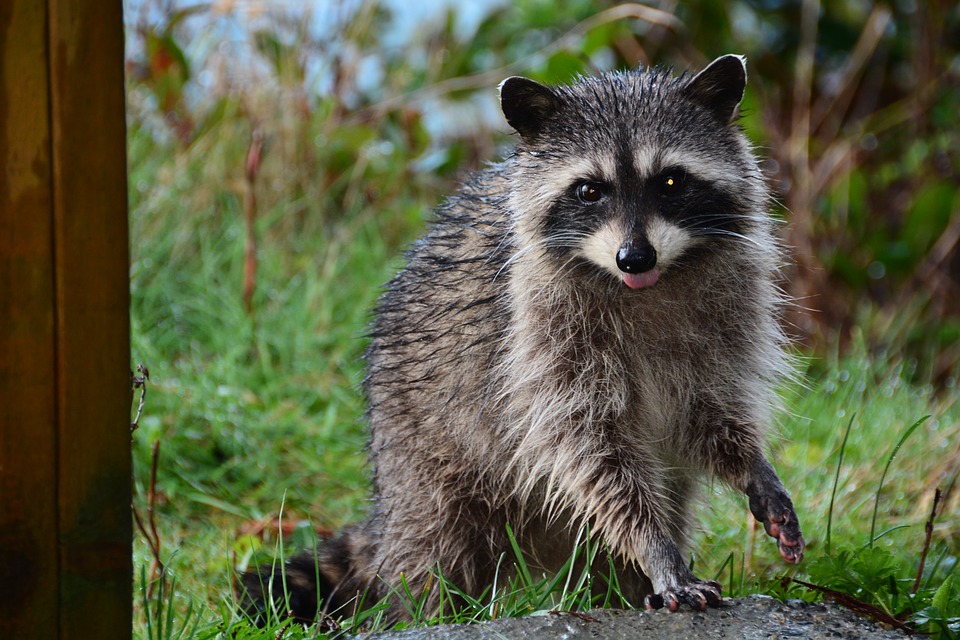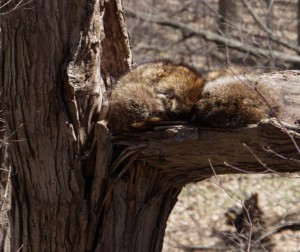
Raccoons are adorable creatures with their distinctive mask-like face and striped tail. They are found in North and Central America and are known for their scavenging abilities. However, they are not always welcome visitors, and their scavenging can cause problems. In this article, we will look at what eats raccoons, what do raccoons eat, where do raccoons sleep, and what attracts raccoons.
What Eats Raccoons
While raccoons are known for being scavengers, they are not invincible. Several predators will hunt raccoons for food. Coyotes, bobcats, and domestic dogs are some of the natural predators of raccoons. Additionally, owls and hawks are known to hunt raccoons, especially younger ones. The Great Horned Owl, in particular, is known for hunting raccoons in the nighttime.
What Do Raccoons Eat
Raccoons are omnivores and eat both plant and animal matter. They are opportunistic feeders and will eat whatever food is available. Their diet includes insects, fruits, nuts, small mammals, fish, and carrion. They also eat human food scraps, which is why they are often found in suburban and urban areas.
In the wild, raccoons hunt for their food. They will prey on small animals such as mice, rats, and squirrels. They are also known to raid bird nests to eat eggs and young chicks. When living near water bodies, raccoons will feed on crustaceans and mollusks.
Pet owners who keep raccoons as pets should ensure that their diets are balanced and contain all the necessary nutrients. It is recommended to feed pet raccoons a diet consisting of commercial pet food and fresh fruits and vegetables.
 Where Do Raccoons Sleep
Where Do Raccoons Sleep
Raccoons are nocturnal animals, and they sleep during the day. They are known for their adaptability and will make their homes in a variety of habitats. They prefer to live near water sources such as lakes, rivers, and ponds, but can also be found in forests, urban areas, and agricultural land.
Raccoons make their dens in trees, hollow logs, and burrows. They are also known to take over abandoned homes, attics, and sheds. In urban areas, raccoons can be found living in storm drains, sewers, and crawl spaces. It is common for female raccoons to nest in dens when they have young.
What Attracts Raccoons
Raccoons are attracted to areas where food is easily available. They are known to feed on human food scraps, pet food left outside, and garbage. Therefore, it is essential to keep trash cans tightly sealed and not leave pet food outside. Bird feeders can also attract raccoons, so it is recommended to place them at a height that raccoons cannot reach.
Raccoons are also attracted to water sources, especially during the summer months. Therefore, it is important to keep swimming pools and hot tubs covered when not in use. In addition, removing any debris that could collect water, such as old tires or buckets, can help reduce the number of raccoons in the area.
If you have an issue with raccoons visiting your home, we suggest our article on how to trap a raccoon safely!
Conclusion
In conclusion, raccoons are fascinating creatures that have adapted well to urban and suburban environments. While they are known for being scavengers, they are not invincible, and several predators hunt them for food. Raccoons are omnivores and eat both plant and animal matter, and their diet includes insects, fruits, nuts, small mammals, fish, and carrion. They make their homes in a variety